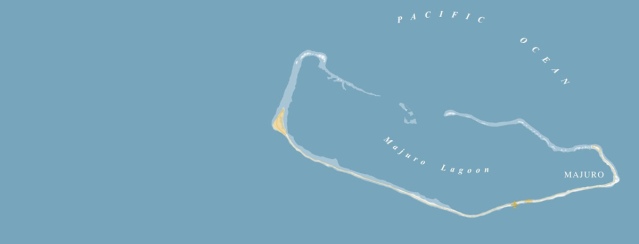
Book review: Sea Change – An Atlas of Islands in a Rising Ocean, by Christina Gerhardt

By Jeremy Williams

When I needed the atlas in my school library, I knew it would be in the reference section – the place you go to look stuff up, to get the definitive answer. So it’s strange to think of an atlas as something provisional and temporary. I suppose they always were, but more so in an era of climate change. Maps are being re-drawn. Coastlines are moving. Glaciers are retreating. Some places might cease to exist altogether, including some places that might vanish without ever really being widely known.
Christina Gerhardt brings this point home in Sea Change – An Atlas of Islands in a Rising Sea, a look at climate change from an island perspective.
It’s an unusual book for a number of reasons, beginning on the front. It has a semi-transparent slipcover that doesn’t really come across in an online photograph, but that makes sense as a physical object. It shows the outline of Deal Island in the Chesapeake Bay. Slide the paper off and you’ll see a revised outline for 2100, the island reduced to slivers of its former self – as if the front cover can be updated if you’re reading it in the future.
Inside, Gerhardt introduces the unique viewpoint of island nations and then dedicates the bulk of the page count to introducing them. How climate change is affecting them, what is lost, and how they are responding. These places matter in their own right, and they are also forerunners of problems that will come in time to coastal areas. ‘Ghost forests’, where saltwater encroachment has poisoned trees. Village relocations. Aquifers and boreholes salinated. Sinking buildings. The loss of critical infrastructure such as roads, bridges, airports or power stations.
Many parts of the world are represented, from cold and icy islands to tropical atolls. We visit wealthy Bahrain and Singapore, to impoverished Haiti or the scarcely habitable Bhasan Char, where Rohingya refugees are being placed. Some I’ve written about here before, such as Isle de Jean Charles or Kiribati. There are places I’ve set foot myself in the Comoros and Mauritius, stopping places on the flight to the far larger island of Madagascar. Others I hadn’t heard of, such as the Mischief Islands in the South China Sea. The book sources local contributions from many of these, often poetry. (I was pleased to find Kathy Jetnil-Kijiner of the Marshall Islands is a recurring contributor. I’m a fan.) It gives far-flung places a voice and grounds them in our imaginations as real places with cultures of their own, places that people call home and have done for generations.
There’s a strong climate justice angle to all of this of course. You can recover from a flood or rebuild after a hurricane. But I’m not sure there’s a greater climate catastrophe than to see your home wiped from the map entirely. To be rendered homeless and even stateless by climate change, to “wander rootless with only a passport to call home”, as Jetnil-Kijiner puts it. And yet the places most likely to experience this have contributed almost nothing to the carbon imbalance. The ten nations with the smallest cumulative carbon footprints are all islands. Many of them have been exploited for resources or appropriated for military bases or nuclear testing, and are still wrestling with the legacy of a colonial logic that has seen them as expendable.
Islanders generally have no intention of going anywhere, and the book touches on various ways they are fighting back against climate change, and adapting to changing conditions. We hear about ‘managed retreat’ from the coast, reforestation, land reclamation and seawalls, and the leadership role some have played in international negotiations.
Along the way the book experiments with different ways of presenting sea level rise. There are sidenotes on navigation and seafaring, geographical explainers, and cultural and historical anecdotes. (I liked, for example, the observation that island cultures tend to see the ocean as something that connects them to their neighbours, not something that separates them – I guess Britain didn’t get the memo on that one.) There are curious facts – Kiribati is the only country in the world to span all four hemispheres. Nauru once had the world’s highest GDP. It’s a rich and rewarding compendium of island cultures and what they have brought to the human story, a warning about their precarious state, and a call to action to prevent their loss.
“On this island, things fidget. Even history” writes Jamaican poet Kei Miller. “Landmarks shift, become unfixed… Whole places will slip out from your grip.”
First published in The Earthbound Report.